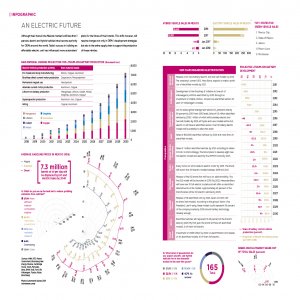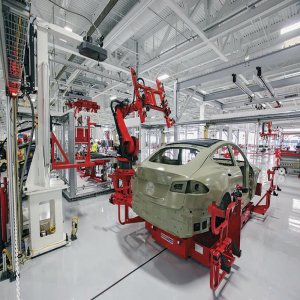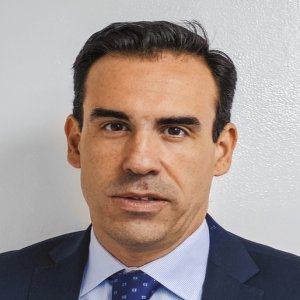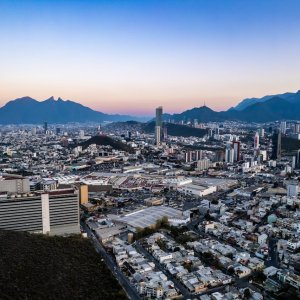Mobility Challenges for the New Administration

STORY INLINE POST
Q: What challenges need to be tackled when working toward implementing a sustainable mobility vision?
A: Any government working to offer safe and sustainable mobility must face two challenges. The first is to generate as many transportation options as possible for people to have access to the city and reduce commute times. The goal should be to reach a modal split where 80 percent of the population uses public transportation, while less than 20 percent of the people use their own vehicle. Today, 45 percent of people use public transportation, 35 percent are pedestrians, 2 percent are cyclists and the remaining are private vehicle users.
The second challenge is to guarantee the population’s well-being. Road safety must remain a strategic priority in mobility planning for the next administration. The government must not fall into populist practices and remove all speed-limit regulations. These are the key to ensuring the safety of the population and we must keep working to ensure technology can save lives.
Q: How can sustainable mobility contribute to the city’s social development?
A: Mexico City faces a significant problem of inequality and public services are no exception. The city has some of the best public services in terms of transportation globally; the problem is that not every citizen has access to them. Many neighborhoods in the Benito Juarez delegation have services that can be compared to the most advanced cities in the world and at the same time, areas on the periphery of the city have social development indexes that can be compared to Africa. Fixing this issue will be one of the main challenges for the incoming administration.
Investing in sustainable public-transport infrastructure and accessible mobility networks is one of the most effective instruments to combat inequality. Mobility is a gateway right to others such as health and education, and this was the basis for the Mobility Plan implemented six years ago. The city based its policies on a legal framework approved in 2014 that complemented the data, evaluation and consensus reached on public transportation. All that translated into a Mobility Law that prevented public officers from investing in grey infrastructure that only works to the detriment of the city’s sustainable ecosystem. The second tier of the Periférico, for example, increased traffic by 34 percent, affecting not only private drivers but also public transportation users.
Q: What is the role of Metrobús in the city’s mobility plan?
A: The city began a transition of its public transportation fleet. Metrobús has been one of the most successful strategies to phase microbuses out but there are still areas where these units operate. Today, 60 percent of all trips in the city are completed with microbuses, out of the total 35 million trips taken daily. This means that, on the one hand, we have a Metrobús system that on a scale of 0 to 10 scores 8.5-8.8 in terms of quality according to users, and on the other, we have areas where people still have to move using microbuses that receive a score of 4 on that same scale.
Q: What priorities would improve the city’s mobility landscape?
A: The city must evolve following three fundamental guidelines. First, the government must ensure accessibility to the city through a safe, inclusive and structured transportation system. The current transportation network must grow by 30 percent or 240km of additional public transportation lines, which is the least the city needs to allow people to have access to their rights and all services the government can offer.
The best strategy for the city would be to invest in 24km of Metro lines to expand the existing network and decongest its stations. At the same time, the government should grow the Metrobús network by 80km and take the next step toward electrification of public transportation and overall mobility. Finally, the city should work on the implementation of a Metroférico, a 50km cableway system that would connect five north delegations with the city center. Right now, people traveling from the north of the city suffer commutes of approximately two hours and with this system, we would reduce this time by 60 percent.
The second guideline the city should follow is related to street infrastructure. Streets are the base of mobility, so they must be universal and open to all users regardless of their method of transportation. The new government should invest in having complete streets with biking infrastructure, confined lanes for public transportation and general lanes for private vehicles. The biking infrastructure alone should grow by 60 percent, adding 270km to the current network and providing better connectivity with public transportation systems.
Finally, technology integration should be a key element in the development of the city. The government should provide better access to technology so all population segments can access alternative mobility options through digital devices. Similarly, technology should be a cornerstone to ensure road safety so the human factor always remains the priority of the mobility ecosystem.
Q: What should be the role of the private sector in the development of Mexico City’s mobility infrastructure?
A: Private investment is critical in the development of a successful mobility plan. Today, the government does have enough resources to support these projects, which means public-private partnerships (PPPs) are the best way to move forward. So far, PPPs have been an excellent vehicle for infrastructure development but the government must ensure that all projects are properly tendered to eradicate any form of corruption. Projects should be better planned to avoid most of the profits coming from infrastructure projects going directly to private companies. Today, only 30 percent of a project’s profit benefits neighborhoods while the company keeps 70 percent. This rate should be reversed to ensure the healthy development of the city.
Similarly, the government must establish clear communication with companies to direct projects and technology developments toward what the city truly needs. We need to move toward electrification and other solutions that disincentivize the use of private vehicles. The country needs committed investors that want to work on public infrastructure projects.
Q: How can new technological platforms contribute to create a sustainable mobility environment?
A: Technology innovation traditionally advances in a different direction than transport regulations. Laws are normally seen as prohibitive in Latin American countries but technology disruption cannot work under those conditions. Technology does not know of politics or legislation. We need to change our mindset to establish regulations that enable different systems to coexist and orient them to what the country needs.
Digital applications have proven to be a key element in improving the city’s mobility and we must revise our laws to ensure these players have a space in the local scheme. That being said, regulations should work to promote the implementation of carpooling and zero-emission vehicles to reduce the potential impact on the city’s environment. At the same time, all new mobility alternatives must work to integrate with the rest of the public transportation system in the city.
Q: Why are mobility issues managed by state and municipal governments instead of being addressed at a federal level?
A: The problem is that the current administration was not bothered about the sustainable mobility agenda, leaving cities alone to meet their own needs and budget requirements. Mexico City, being one of the largest cities in the world, cannot address its mobility issues with its own resources. Taxes are collected from only 9 million people and yet we have to solve 35 million daily trips from the entire metropolitan area.
Participation from the Federal Government is essential to alleviate the city’s mobility issues. Except for the Mexico-Toluca Interurban Train, there was no investment in Mexico City’s mobility from the Federal Government during this administration. We need a legal framework that forces governors from different states to dialogue about the country’s mobility needs and that addresses their budget concerns. I think a Metropolitan Planning Institute and a Metropolitan Agency of Urban Services would be ideal first steps to build national integration. These entities would work alongside SEMOVI, as well as water, waste and public lighting providers, considering these are the services that are lacking for a large part of the population depending on where they live.
We desperately need a national mobility plan and metropolitan funds to invest in mobility projects in different cities, as well as an Urban Transportation Ministry within the Ministry of Communications and Transport to disincentivize grey infrastructure and work toward sustainable mobility projects.
























